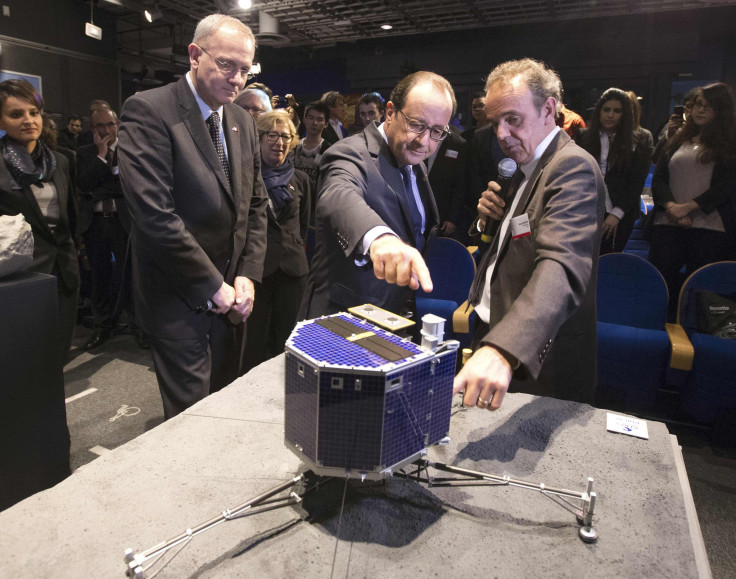Space Junk: Will Philae Join The More Than 500,000 Pieces Of Debris Already In Space? [INFOGRAPHIC]

The European Space Agency's historic comet landing last week drew a global audience, but the event didn't go exactly as planned. The Philae lander was unable to deploy its harpoons into the comet's surface and fell into a crevice on its side. Philae's current location prevents it from getting sunlight to charge its batteries. But if the lander, which already has gathered a large amount of scientific data, can't be made to function again, it will join a vast amount of space debris -- approximately 500,000 pieces of debris -- already orbiting Earth.
Philae is unlikely to join the space debris near Earth, but those roughly 500,000 pieces of debris pose risks that space agencies around the world are actively monitoring.
For one thing, the amount of space debris is growing. In 2007, a Chinese anti-satellite test added 3,000 pieces of debris, while a collision between a Russian satellite and a U.S. commercial satellite added 2,000 bits of debris, NASA reported.
For another thing, many pieces of debris are large enough to be dangerous. There are 20,000 pieces of debris larger than a softball orbiting Earth and there are millions of pieces of untrackable debris which could damage satellites. The International Space Station has "debris avoidance measures" which can be launched in 30 hours.
Cleaning up the orbiting garbage would be a massive task. While NASA, the European Space Agency and Roscosmos have plans to monitor space debris, cleaning up the junk is another problem that has yet to be solved. Among U.S. agencies, the Federal Aviation Administration, the Federal Communications Commission and the National Oceanic and Atmospheric Administration are responsible for commercial space licenses, communications satellites and commercial Earth-focused craft, respectively, Space.com reported. As such, each of these agencies may have a claim to manage debris cleanup.
While Philae may not add to the clutter orbiting Earth, it could be the latest bit of defunct technology in space. Still, there is hope the spacecraft will be useful again. The current problem of blocked sunlight could be solved as the comet 67P/Churyumov–Gerasimenko enters the inner solar system and gets closer to the sun, says the Washington Post. The best chance for Philae's batteries to be recharged and the lander to resume scientific work will be before next March.
And it has happened before. The ISEE-3 satellite was launched in 1978 before going idle for 28 years. Then a group of citizen scientists crowdfunded the necessary money to establish communication with the satellite.
World Science Festival created a space junk infographic that shows Earth's extraterrestrial garbage. It's not all high-priced hardware. It includes the ashes of author Gene Roddenberry and a very large amount of frozen urine.

© Copyright IBTimes 2024. All rights reserved.






















